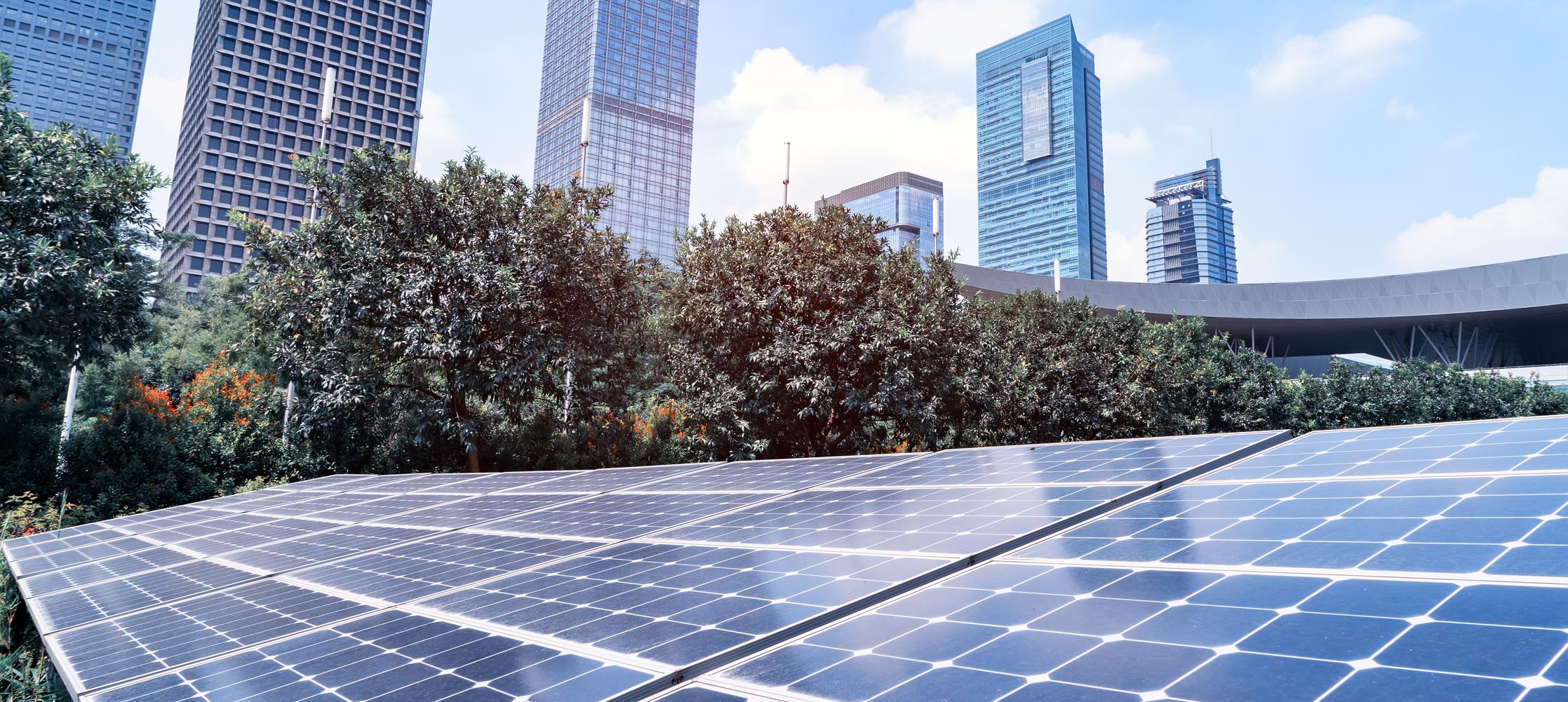-
https://climateinstitute.bmo.com/static/images/clock-icon.svg
5 Minute Read
-
Listen
-
Stop
-
Text Bigger | Smaller
The buildings that we work, study, and live in are responsible for more than a quarter of global greenhouse gas emissions (GHG). There is no road to net zero, without widespread deep retrofits of the world’s building stock, with more than US$1 trillion in funding needed to achieve this goal through 2050 in North America alone.
At the recent Retrofits Canada 2023 conference in Montreal, we had the opportunity to host a workshop and participate in a panel discussion on the barriers to action with a diverse group of stakeholders, including some of Canada’s largest real estate asset managers, top-tier energy services companies, and all levels of government – from federal to municipal. Some of the biggest challenges include a lack of awareness about existing or incoming municipal energy efficiency regulation, and a need for education about the long-term benefits of building energy efficiency.
However, to really jump start retrofits, we must collectively find a way of making them as seamless and cost effective as possible for the mid-market owners and operators who comprise the bulk of Canada’s commercial and industrial building stock.
Sentiment Is Changing
To be sure, we've found a growing acceptance among owners and asset managers that retrofits will need to happen. Sentiment is changing within the industry. But the pace and scale need to accelerate dramatically – to 4-5% of total building stock per year being retrofitted, from the <1% today.
The impending arrival of new GHG reporting requirements has made it easier to broach the subject with clients who may not have retrofits on their radar. For example, Montreal, Toronto, and Vancouver are part of C40 Cities, a network of global cities taking climate action, including commitments to enact new regulations and policy ensuring all buildings are net zero by 2050.
Vancouver was an early adopter of a set of standards designed to reduce emissions in buildings through efficient use of energy and regular GHG reporting. The standards become stricter over time, driving continuous, long-term improvement in the building stock.
Additionally, it's encouraging to see retrofits popping up in unexpected places, such as vacant, post-pandemic offices, some of which are now being converted into energy efficient residential housing or mixed-use retail properties.
But more needs to happen. That’s why earlier this year, BMO collaborated with the Canada Infrastructure Bank (CIB) on a first-of-its-kind retrofit solution. The offering provides clients access to impact capital for retrofits with pricing incentives that are directly linked to emissions reductions.
Shifting The Understanding of Payback and Risk
One of the most consistent barriers to exploring retrofits in Canada's middle market segment seems to be the perception of long payback periods, something that could be unattractive for managers accustomed to financing projects with a 3 to 5-year payback.
However, simple payback based on energy savings is often not the best metric to determine benefits. Some projects whose simple paybacks may not be immediately attractive become much more compelling when you conduct a lifecycle analysis of an asset or portfolio to account for some of the broader costs and benefits.
For instance:
-
Has the price of carbon ramping up to $170 in 2030 been included in the analysis?
-
Or the likelihood of municipal fines for exceeding a target GHG intensity?
-
Has the analysis factored in the potential costs of removing gas-fired space and water heating before the end of their useful lives?
-
Or the potential for a “brown discount” on the building’s value because of the deferred liabilities associated with decarbonization?
-
Are the “greenium” benefits of client retention, tenant wellness, and climate resiliency being assessed?
These factors can materially change a retrofit project's value.
The industry is moving away from solely looking at the nuts and bolts of annual energy use per square foot to including operational carbon emissions. "Moving away from the purely energy metrics and toward carbon really changes the discussion about what a payback looks like," said Graham Halsall, director of sustainability & risk management for ONE Properties.
Indeed, rapidly evolving physical and transition risks stemming from climate change are pressuring the industry to update its risk management models and frameworks. In other words, in a changing world, old ways of thinking won't be relevant for planning future retrofits.
“Our risks have changed and yet our models haven't," said Bala Gnanam, vice president of sustainability, advocacy & stakeholder relations with the Building Owners and Managers Association of Canada. “We need to rethink our models and use all the resources that are available to us today."
An Evolving Financial Landscape
The decision on a deep retrofit is not a simple one. We recognize that even if owners have a clear understanding of the long-run benefits of a building upgrade and they have a strategy, the projects can involve multiple stakeholders and be capital intensive.
But given the scale of the opportunity and the challenge, the financial sector needs to catch up to the urgency of the moment by helping real-estate operators with dedicated financing that reflects the full scope of retrofit costs and benefits.
For its part, BMO is dedicated to finding innovative, tailored solutions for building owners trying to meet their sustainability targets. The commercial retrofits financial ecosystem that BMO launched in partnership with CIB is the latest effort to accelerate industry change, and we’re proud of the clients we’ve supported. More is needed, but it’s a start from which we can build and scale.
The current retrofits landscape in North America underlines the imperative for all involved parties, including banks, energy services companies and building owners, to work together to find elegant solutions to accelerate the retrofit market. BMO are proud to lead in this regard. We look forward to deepening relationships with clients and partners, and together punch above our weight in decarbonizing the built environment we all share.
Featured Publications

“It was a great privilege to be at COP28 representing BMO and helping advance the matter on c…

Corporate climate action appears to be reaching a new phase. More companies in the United States an…

BMO Arranges Green Financing to Fund New Lawson Centre for Sustainability, Trinity College's Mo…





